When Gaël Petermann and Florian Bédat, the duo behind Petermann Bédat, announced the launch of their 1967 Deadbeat Seconds back in 2020, it was a watch that immediately caught my eye. The first prototype of the 1967 featured a simple, classic blue dial with Roman numerals at 12, 3, 6 and 9, and the watch was driven by an impeccably finished, manual-wind, deadbeat seconds movement – calibre 171.
This movement was developed in-house by Petermann Bédat with support from Dominique Renaud, founder of what is now APRP (Audemars Piguet Renaud Papi), a highly respected movement developer and manufacturer – the fact that Renaud Papi was acquired by Audemars Piguet speaks volumes.
In an effort to then evolve the design language of the watch, the duo opted to work with designer Barth Nussbaumer. The result was a new, multi-layered and semi-openworked dial which brings a whole new contemporary aesthetic to the watch, exposing three rubies dial-side as well as making several screws visible, and the keyless works at the crown, between 1 and 4 o’clock.
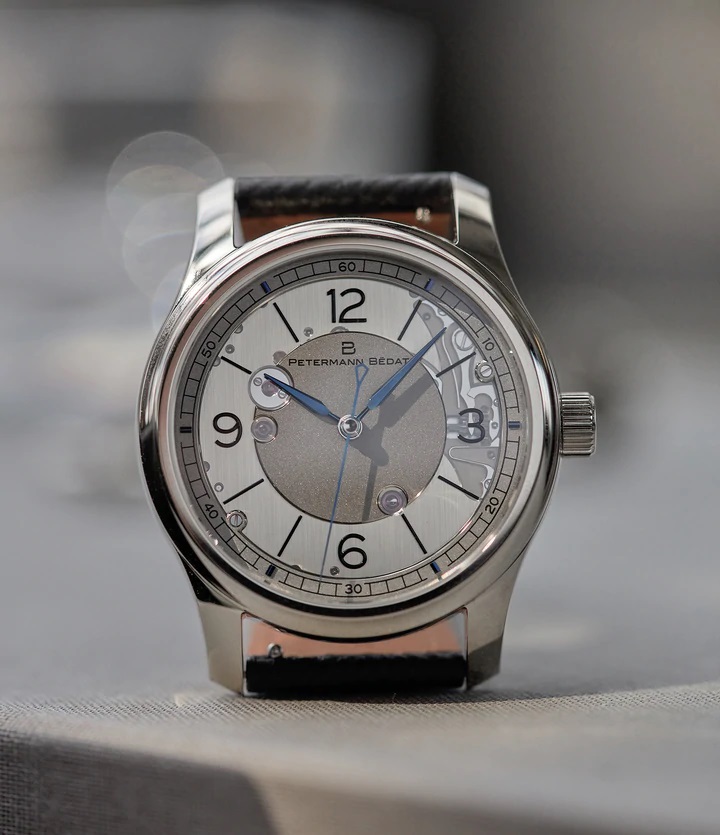
Petermann Bédat 1967 Deadbeat Second – photo, A Collected Man
With such a limited production (10 in rose gold, 10 in white gold, and 25 in the new titanium) which is all sold out, I didn’t think I would ever get the chance to get hands-on with one of the watches.
Luckily, however, I was able to meet with both Gaël Petermann and Florian Bédat when they visited London recently, both to have a look at the titanium prototype watch and have a chat to learn more about their journey, as well as enjoy a few beers.
In Conversation with Gaël Petermann and Florian Bédat of Petermann Bédat
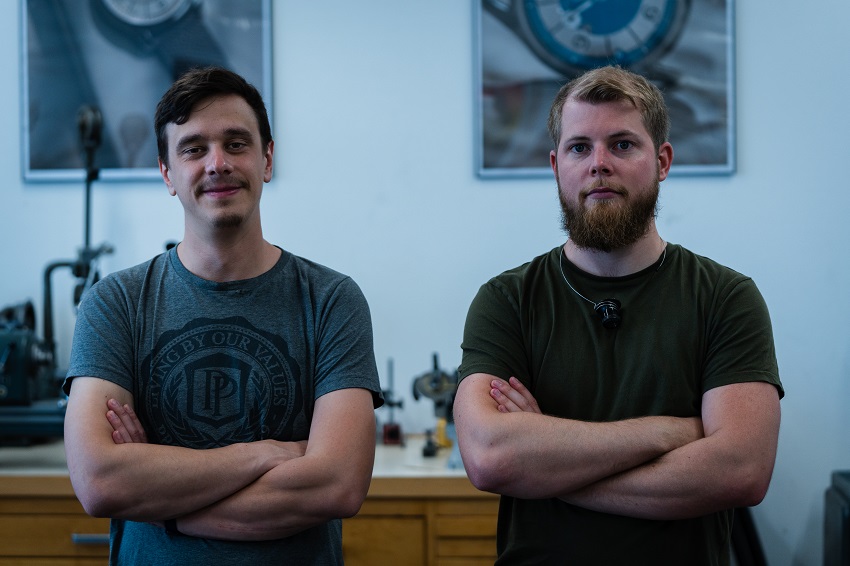
Gaël Petermann (L) and Florian Bédat (R) – photo, Petermann Bédat
With independent watchmaking, I genuinely believe that the watches produced are a reflection of both their creator, but also the journey they have taken to get to the point at which it was created. I asked the pair how they started out, and despite having met at the Watchmaking School of Geneva, they both took a very different career path before deciding to founder their own brand about 10 years later.
GP: After the school of Geneva, I went to work at A. Lange & Söhne where I spent a few years. I didn’t speak German, and part of what they offered me was to learn German a couple of times a week as well, which really helped. During my time at Lange, even though I started out on simpler watches, I got the chance to work on more complicated things as well, which isn’t something that you get to do very much so early. For example after a year or so, I said that I wanted to work on chronographs, but I got to work on perpetual calendars! After three years, I wanted to return to Switzerland, and when I left Lange, I worked with both Svend Andersen and Christie’s as an independent, which was amazing because I got to work on different things, and learned a lot and met lots of people from the industry.
FB: For me, after school I went to work at Harry Winston. When I was here, I was working on basic movements, and after a little while I got a chance to spend a short amount of time working on something more complicated. This was an amazing experience, and I knew straight away that this was what I wanted to do, but unfortunately the opportunities at Harry Winston were limited for doing this, and I had to go back to working on the basic movements again. This was a bit frustrating for me, and when Gaël reached out to me and suggested Lange, I decided to make the jump and move to Dresden. I didn’t speak German, but they also provided me with language classes to help, and at Lange I was able to start working more regularly on more complicated pieces which is what I wanted to do. I stayed at Lange for a few years as well, before I decided that I wanted to come back to Switzerland.
GP: When Florian moved back to Switzerland, we decided to start our own workshop together in Renens, working on restoring vintage pieces for Christie’s. We both had wanted to make our own watch. Lucky for us, our workshop was next to Dominique Renaud, who is one of the founders of Renaud Papi, who make complications for brands like Audemars Piguet. One day he asked us if we could make the decoration on his new movement, and of course we were glad to help. In the end he helped us to be able to make our own movement for our own watch, which is when we started to work on the 1967.
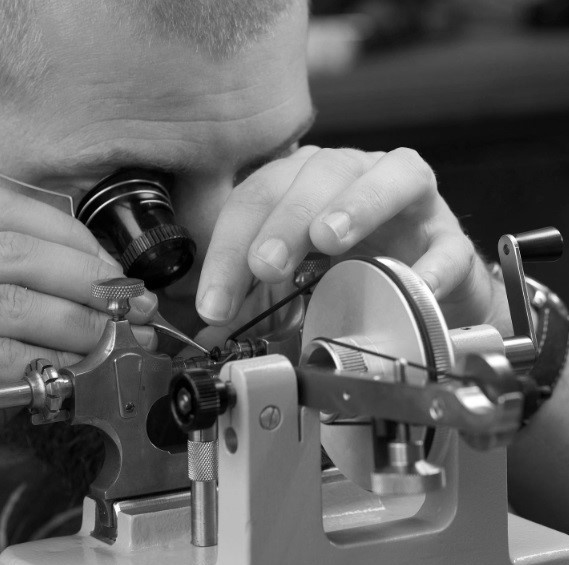
Florian Bédat – photo, Petermann Bédat (@petermann_bedat)
I was curious to understand whether having grown up in Renens, not far from Geneva, an appreciation of watchmaking was perhaps more prevalent in the wider community, and whether the presence of the watchmaking industry had a bearing on their decision to get into watchmaking.
FB: It’s an interesting question, but I don’t think that there are necessarily more people that have a nice watch in Geneva, or Switzerland, compared to elsewhere. Of course, it can be a lot easier to find what you want, and when it comes to big presents like for graduations, a nice watch is always a great gift idea and there is a lot of choice here, especially in Geneva.
GP: I agree. I think that growing up in Switzerland, you are obviously aware of the watchmaking industry, and so it is more of an option to get into for a career than it might be in other places, as there are lots of companies here and lots of jobs available. But, of course, you don’t have to be in Switzerland to be making watches!
Where both Gaël and Florian’s watchmaking journeys have a lot of traditional watchmaking experience, working at both A. Lange & Söhne as well as restoring older pieces, it is easy to see where the pair’s appreciation for classical watchmaking comes from. I wanted to learn more about the origins of the 1967, and the story behind the evolution of the dial from the early, more traditional prototype dial with Roman numerals to the modern, semi-open worked dial.
FB: So when we started to design the watch, we knew we both wanted to make a classic looking watch because we both like traditional watchmaking. After we made the movement, we decided to go for the blue dial with Roman numerals to reflect the traditional design that we liked. When we released the prototype, we were amazed to get such great feedback on the movement, but on the other side some people were saying that the dial didn’t match the movement.
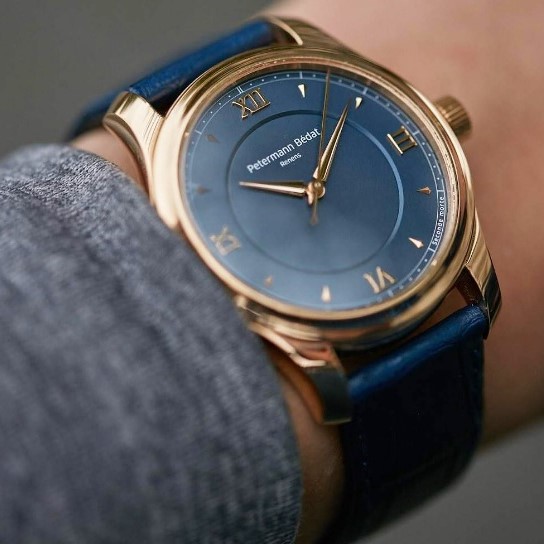
The original 1967 dial – photo, Petermann Bédat (@petermann_bedat)
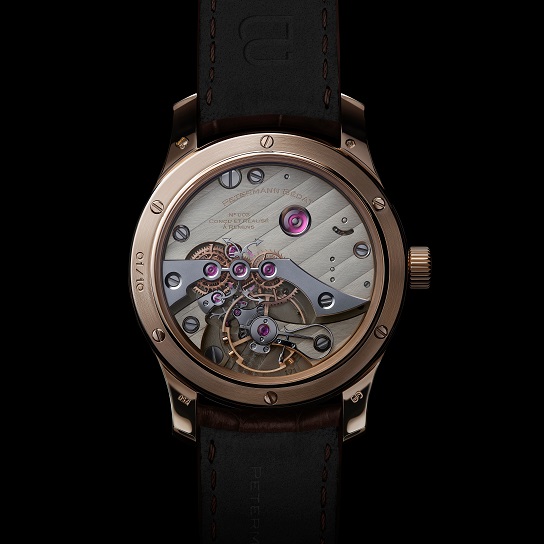
Calibre 171 – photo, Petermann Bédat
GP: This was a big lesson for us, because we had definitely focused more on the movement than the dial, and then I guess this showed in the prototype. We were introduced to Barth (Nussbaumer) who is a designer and agreed to help us, and he spoke to us to understand what we both like, what we both don’t like, and how we wanted to the watch to be. What he did was amazing, and when he showed us the design for the dial, he had captured both of our tastes perfectly, and the new design he created was one which we loved, and the next design for the 1967 was ready.
It was interesting to me that the choice of the complication was a deadbeat second. This is a complication which is far from being simple to do and renders the seconds hand such that it ticks (similarly to a quartz watch) rather than a sweeping as a mechanical watch would. I wanted to understand more about why the pair had opted for this complication, and where the arrow detailing on the dead-beat seconds anchor had come from.
FB: When we decided to make the watch, we wanted to have a time only watch to start with, but then when we started to work with Dominque Renaud we wanted to add a complication as well. So, we chose deadbeat seconds because this is a complication that we could still do with a time only watch, it means we can have a simple and clean dial. Also, we thought that this is a complication which will be appreciated by collectors, it doesn’t stand out so much on the watch.
GP: After we decided to do a dead-beat seconds complication, we went to the library to research the existing systems, where we found the Gafner system which features the anchor. We liked this system because you can see it on the back side of the watch, compared to the majority of the dead beat mechanisms which are hidden under the dial. Once we had chosen a system with an anchor, we decided to make arrows on it like we had seen on a different restoration we made, and we could decorate it to a really high standard.
FB: We also chose to do the swan neck regulator as well, because not only is it the best for traditional watchmaking, but it looks the most beautiful. We focused a lot on the movement to make it the best reflection of our own philosophy for watchmaking.
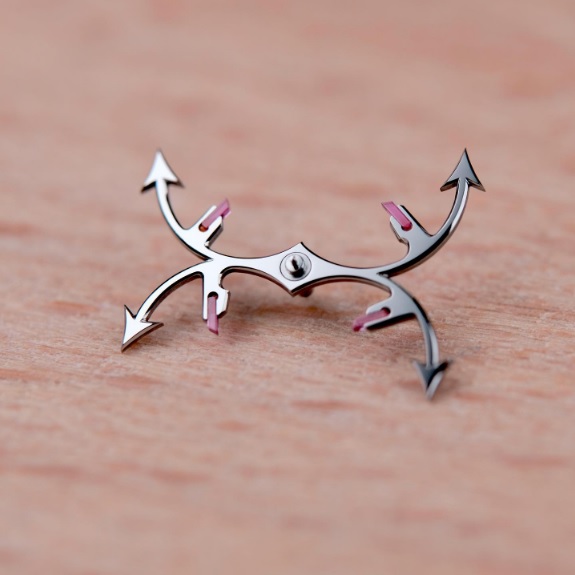
The 1967 Deadbeat Second Anchor – photo, Petermann Bédat (@petermann_bedat)
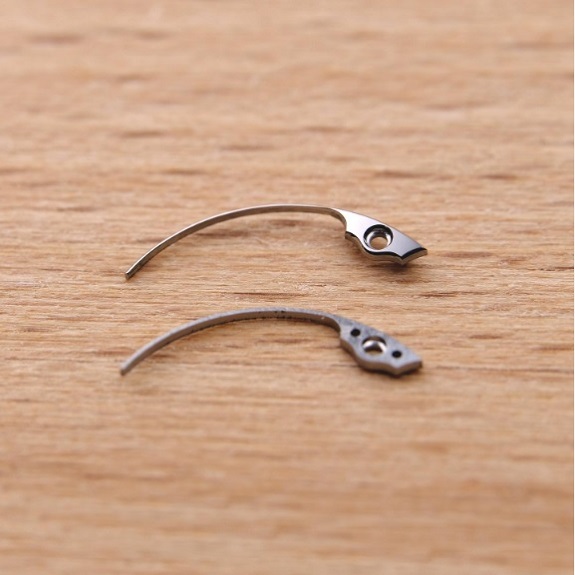
Before and after component finishing is applied – photo, Petermann Bédat (@petermann_bedat)
Since launching their own Petermann Bédat brand, the reception of their watches has been widespread positivity, with clients having bought each one of their watches, and I wanted to learn about the journey of starting and running their own business and watchmaking operation.
FB: It has been fantastic so far, and of course we are so pleased with the feedback we have had for the 1967. But it is also very difficult because we can only make 10 watches a year, and we have a lot more people asking about our watches than we can make watches for. Sure, not everybody who asks about a watch would buy a watch, but we would still love to be able to make more watches. At the moment, we have 2 watchmakers and 1 finisher working with us in our workshop, putting watches together and finishing the components by hand. Whilst we don’t make every single component, we do finish everything by hand. We use German silver, so we assemble each watch and adjust it first, before disassembling the watch to apply the finishing to each part. This is because if we finished the parts first, it is very easy to spoil the finishing when assembling and adjusting the watch, so we do the finishing afterwards.
GP: We have learned a lot since we started, and like I said earlier one big lesson was about making sure we focus on the whole watch and not just the movement, or just the dial. We have been lucky as well because when we ask need some advice, there are lots of people who are able to help us. People we have worked with like Dominique Renaud, and other people like Kari Voutilainen have always been really kind and helped us out when there was something we weren’t sure about. Being able to have help from these people has been brilliant for us to help us with the business.
I was also curious as to how they saw the future and what they had coming next.
FB: Once we have completed the orders for the 1967, we have been working on a new watch with a different complication, which we will hopefully introduce and launch in 2023, but we aren’t ready to talk about this just yet!
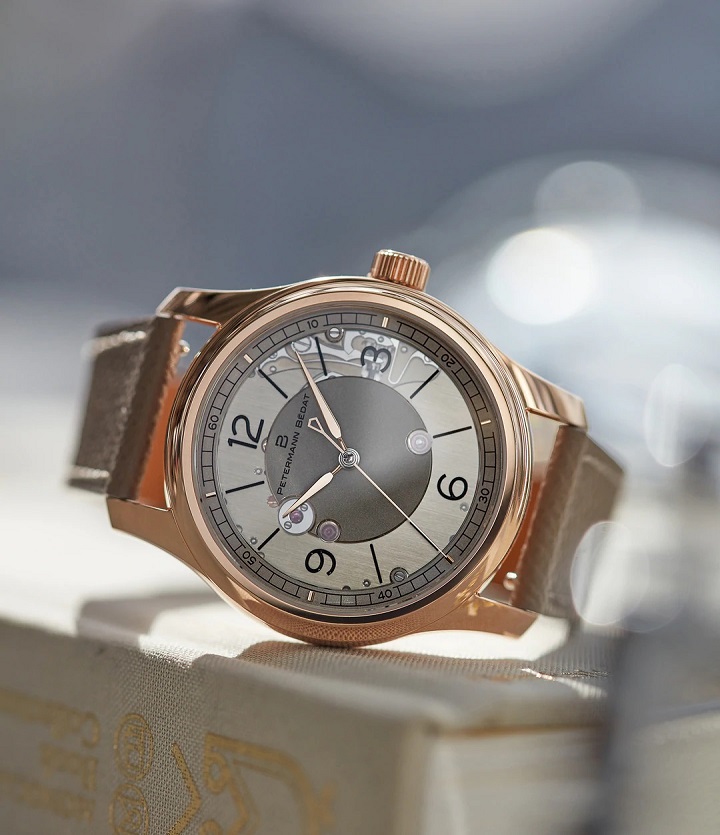
Petermann Bédat 1967 Deadbeat Second – photos, A Collected Man
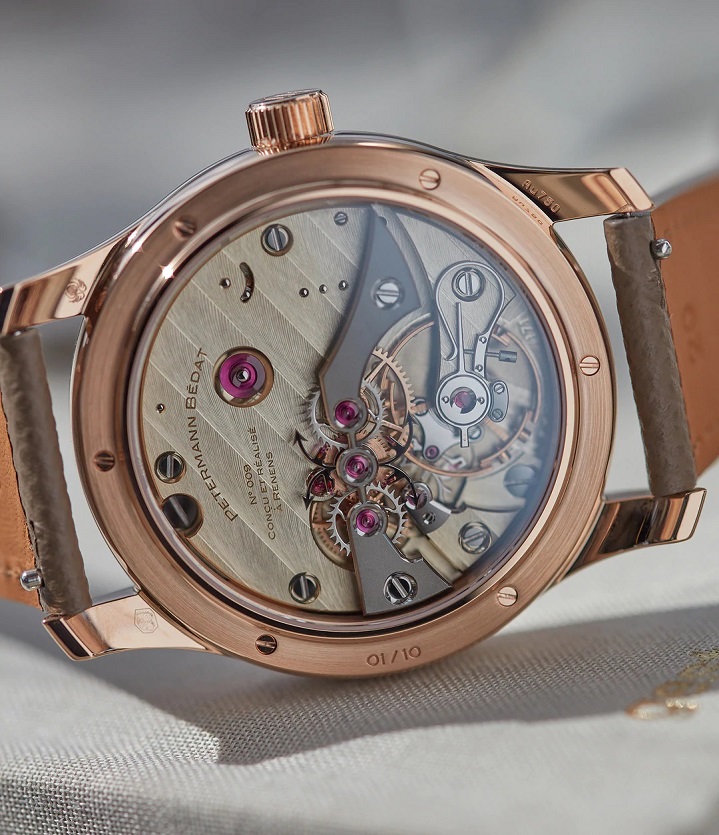
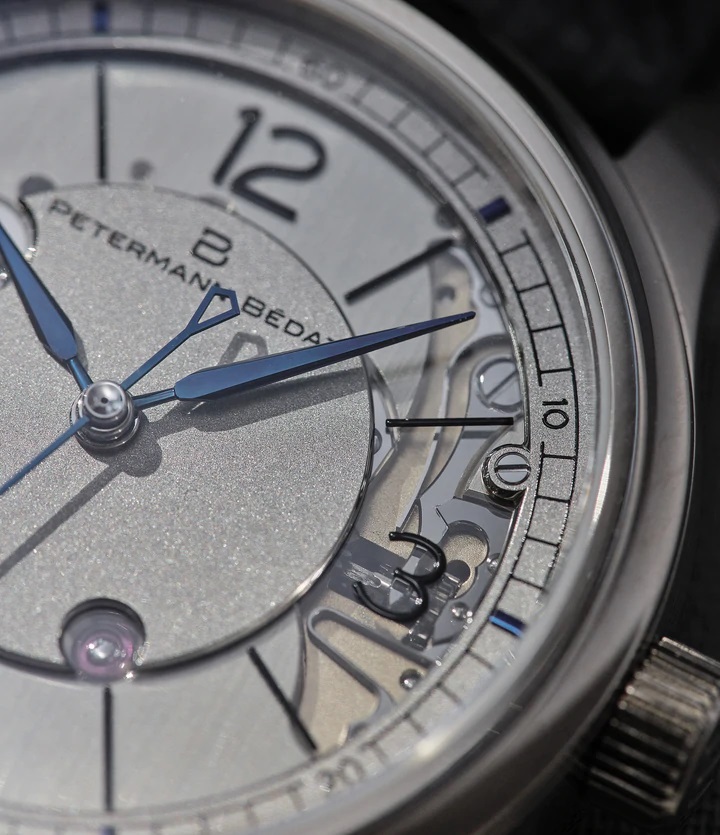
Being able to spend an afternoon in London talking watches with Gaël and Florian was an awesome opportunity, one for which I am very grateful. They were great to speak with, and I was struck by their absolute passion for watchmaking, especially when I was getting lost in their 1967 titanium prototype and they were talking me through it.
In person and on the wrist, the watch is fantastic. The 39mm size is right on the sweet-spot and, being both lightweight grade 5 titanium and just 10.7mm thick, is very comfortable. Whilst the bright blue colour is a bold one, it isn’t overbearing as it is restricted to a smaller central disc and the minutes/seconds track on the periphery.
Overall, the colourway and multi-layered design of the dial works brilliantly well. The line batons, numerals and redesigned logo typography (compared to the original prototype) combined with the exposed jewels and screws bring a very welcome, contemporary, and almost modern-industrial, aesthetic to the watch.
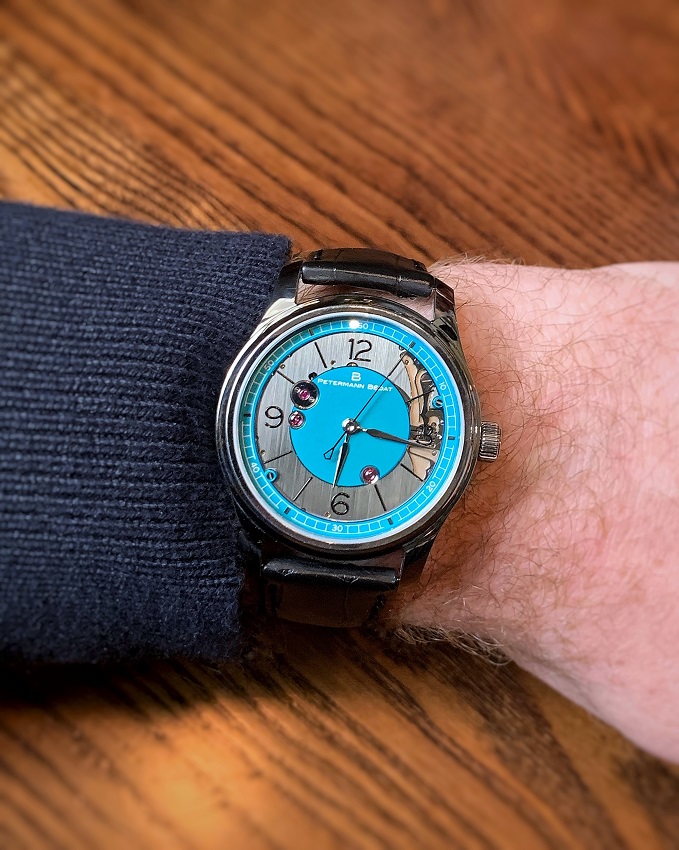
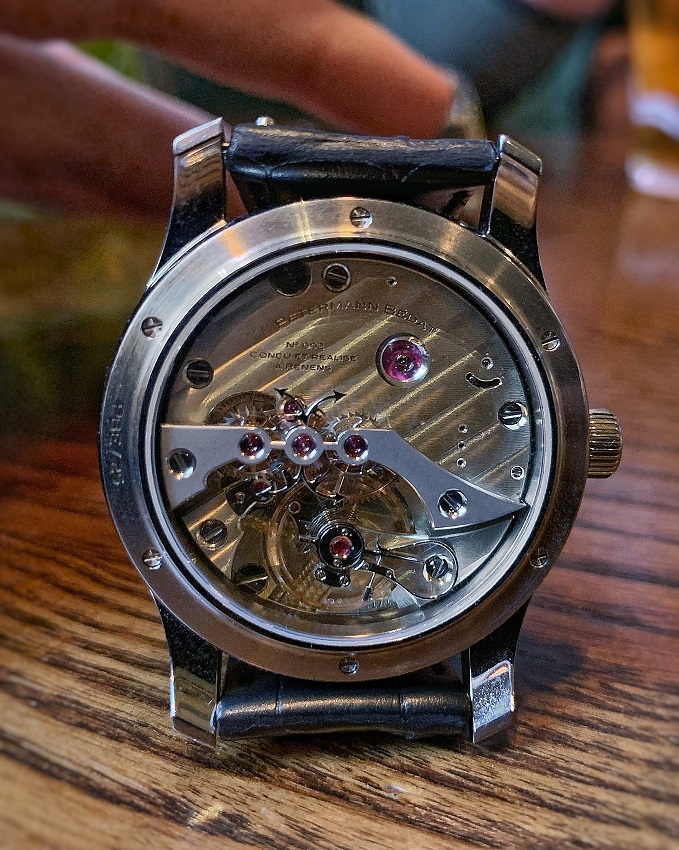
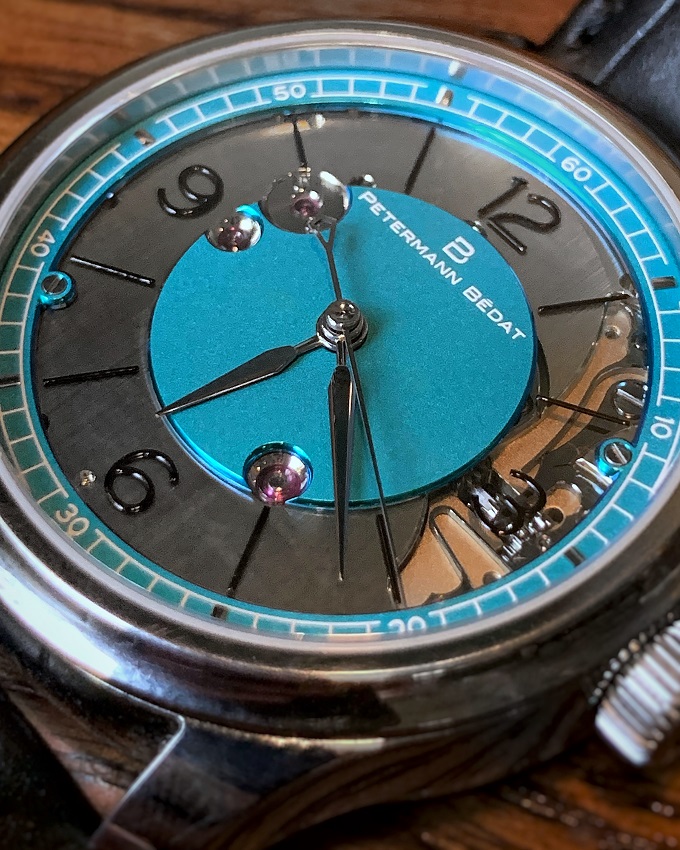
Flipping the watch over, the star of the show is the movement. Admiring it up close, it is very easy to get lost in the details. Winding it felt unlike anything I have experienced previously – after turning the crown clockwise, releasing the rotational force prompted a very small anti-clockwise movement back. I really enjoy this kind of interaction with a watch and consequently found myself going back to wind it several times!
The large bridge on the top half of the movement is decorated with numerous finishing techniques including Geneva stripes with hand-polished chamfering around the edges. There is circular graining, perlage, and all steel components are both bevelled and polished by hand.
The deadbeat anchor with its arrowhead finishing rocks from side to side every second, introducing the ‘tick’ of the seconds hand, dial side; it is difficult to imagine just how intricate and difficult applying the hand-finishing to these tiny components must be.
But this is the level of attention to detail afforded to a Petermann Bédat watch, and why there is surely a very bright future ahead for this independent watchmaking duo.
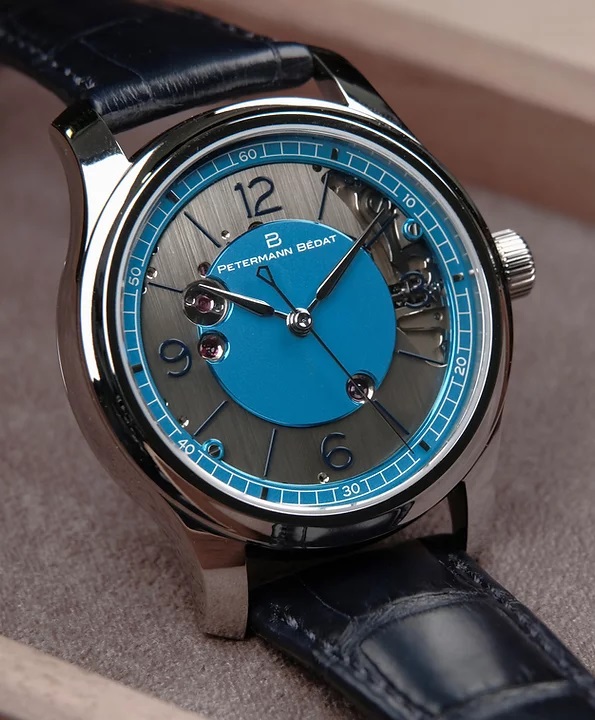
Petermann Bédat 1967 in Titanium – photo, Petermann Bédat (@petermann_bedat)
In Summary
For me, the afternoon spent with Gaël Petermann and Florian Bédat was a fascinating insight into the world of watchmaking from the watchmakers’ perspective. It also happened to be the first time I have been able to speak with someone with a view to writing for this website in person!
They are two great guys with an infectious enthusiasm for watchmaking. Their focus on the details of what goes into their watches is doubtless key to the success that the Petermann Bédat has experienced in the last few years, as collectors are becoming more aware of what goes into the watches that they buy.
I am left excited to see what comes next from Petermann Bédat – if the 1967 is anything to go by, I’m sure it will be another resounding success followed by an incredibly bright future.
A huge thank you to A Collected Man, official partners of Petermann Bédat, for permission to use their photos. For more information visit either A Collected Man or Petermann-Bedat.ch
If you have any questions, please get in touch via our Contact page, or via our Instagram
Don’t forget to check out the Interviews Page for more!
You might also be interested in:
- Independent Watchmaking – An Ode to the Indies
- Watch Finishing Techniques
- In Conversation with Svend Andersen
- Watch Stationery and Gift Ideas
- Watch Books, Watch Boxes and more at the Watch Affinity Shop on Amazon (commissions earned)
As an Amazon Associate, I earn from qualifying purchases – thank you for your support

